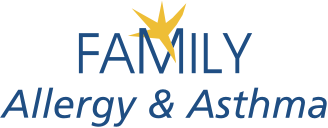Navigating Childhood Allergies: A Guide for Parents

Navigating the ups and downs of childhood allergies can be a complex journey for kids and their parents. However, most stress caused by symptoms lies in the unknown. Childhood allergies are a common concern – impacting around 30% of children worldwide – and, with proper understanding, your family can learn to navigate life with allergies confidently.
Understanding Common Symptoms of Allergies in Children
While adult and childhood allergies are mostly similar, children’s immune systems are still developing, making them more susceptible to allergic reactions. Interestingly, some children may outgrow allergies as they age—a hopeful note less common in adults.
The most prevalent allergies in children include food allergies – particularly those of the “Big Nine.” This small selection of triggering foods accounts for about 90% of all food allergy reactions. The Big Nine include:
- Peanuts
- Tree nuts (cashews, pecans, walnuts, etc.)
- Milk
- Egg
- Wheat
- Soy
- Fish (halibut, salmon, etc.)
- Shellfish (crab, lobster, shrimp, etc.)
- Sesame
Other common causes of allergy symptoms involve environmental triggers like pollen, dust mites and animal dander. Reactions can range from mild (sneezing, itchy eyes) to severe (difficulty breathing, anaphylaxis). Early recognition and response to these symptoms are key to ensuring safety and comfort.
Navigating Childhood Allergies with Confidence
Children depend on adults to successfully learn to navigate these challenges. To empower your child to live confidently and safely with their allergies, consider these strategies:
1. Educate yourself and your child.
Knowledge about your child’s specific allergies is essential. Learn to recognize symptoms and educate your child on avoiding triggers and managing reactions. Over time, these teaching moments will help to foster your child’s sense of independence and your peace of mind as they venture into the world.
2. Develop an allergy action plan.
Create a plan with your healthcare provider detailing how to avoid allergens, recognize symptoms and respond to emergencies. This should include instructions on medication use.
3. Communicate with caregivers and schools.
Ensure all caregivers, including teachers and babysitters, are informed about your child’s allergies and know how to act in case of an allergic reaction.
4. Prioritize allergen avoidance and emergency preparedness.
For food allergies, this means careful label reading and for environmental allergies, using air purifiers and hypoallergenic bedding. Always have allergy medication accessible and teach your child and caregivers how to use an epinephrine auto-injector if needed.
5. Schedule Regular Check-Ups
Regular visits to an allergist can help adjust your child’s treatment plan and address any concerns, ensuring they can participate in all activities safely.
How to Treat Allergies in Children
Like all allergies, childhood allergy symptoms are most effectively managed through a combination of tactics. These include avoidance, medication and immunotherapy.
- Avoidance involves minimizing contact with the allergen. This method can be effective but may require lifestyle adjustments, such as dust-proofing your home or showering immediately after outdoor activities to remove pollen.
While animal allergies are common, removing a beloved pet from the home is rarely necessary with proper management and support from a board-certified allergist.
- Medication is another important tool, offering short-term relief from symptoms and inflammation. Prescription and over-the-counter options are available. However, regardless of type, it is essential to consult with an allergist before administering any medication to ensure its safety and effectiveness.
- Immunotherapy (or allergy shots) is a long-term treatment option, gradually building your child’s immunity to allergens through controlled exposure. Although it requires a commitment to regular allergist visits, it offers the potential for permanent relief from allergy symptoms.
Identify your symptoms and discover allergy relief!
Let’s find a clear solution together! Family Allergy & Asthma’s trusted allergy specialists are always ready to guide patients toward relief. With locations across the region, allergy relief is always close to home. Contact us today to schedule your allergy appointment.
About Family Allergy & Asthma
Founded in 1979, Family Allergy & Asthma’s practice network of allergy and asthma specialists provides high-quality, reliable and lasting allergy relief throughout Arkansas, Florida, Illinois, Indiana, Kentucky, Missouri, Ohio, Pennsylvania and Tennessee, and includes affiliates Allergy & Asthma Specialists (AAS), Asthma and Allergy Associates of Florida (AAAF) and Arkansas Allergy and Asthma Clinic (AAAC). For more information, visit familyallergy.com, and follow Family Allergy & Asthma on Facebook, Instagram and X.


